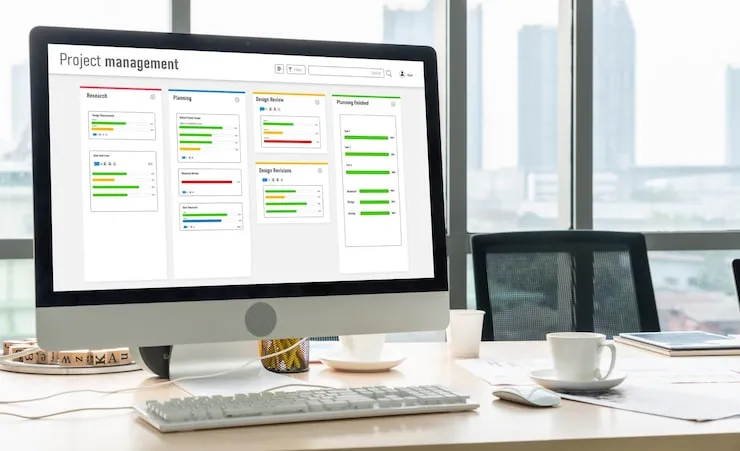If there’s one thing in working with cloud systems, it’s this: speed and efficiency are never guaranteed. You can have the biggest servers, the fanciest dashboards, and still find yourself staring at a loading screen when your team needs things to move. That’s where cloud performance optimization tools and techniques come into play. They’re not just a “nice to have”, they’re what keeps your cloud infrastructure running like a well-oiled machine.
An unoptimized setup can make something as simple as loading a report feel like watching paint dry. The right tools, paired with smart techniques, turned that around completely. Let’s break down what actually works, why it matters, and the exact solutions that can save you from headaches later.
Why Cloud Performance Matters More Than You Think
A lot of companies focus on getting into the cloud quickly, migrating files, spinning up instances, moving workloads but skip the “tuning” phase. That’s like buying a car and never checking the tire pressure. Without ongoing cloud optimization software and solid monitoring, performance dips sneak up on you.
The result? Your customers feel the lag before you do. E-commerce platforms lose impatient buyers simply because their pages didn’t load fast enough. A simple tweak in configuration or the adoption of cloud performance monitoring tools could have fixed that.
The Role of Cloud Performance Optimization Tools and Techniques
Let’s get this straight: the “tools” do the heavy lifting, but the “techniques” are what make them truly effective. The software collects metrics, automates scaling, and identifies bottlenecks but without a human strategy to act on those insights, you’re leaving money on the table.
When you start experimenting with cloud speed improvement tools,you might think buying the most advanced product on the market is the answer. Wrong. It was only when you pair those tools with clear optimization techniques like adjusting server allocation based on usage patterns that you will see real, measurable change.
Cloud Performance Optimization Tools and Techniques in Action

Every business’s cloud setup is different, but these are the tried-and-tested approaches that have worked.
1. Performance Monitoring Tools – Your Early Warning System
Treat cloud performance monitoring tools like a smoke detector. You hope you never hear it beep, but you’ll be glad it’s there when something starts going wrong. These tools track response times, error rates, and CPU usage in real time. Let’s say you have issues like a slow API response issue that is invisible to the development team, the monitoring tool can spot it before it becomes a customer complaint.
2. Cloud Optimization Software – Automating the Boring Stuff
Manually tweaking cloud resources is exhausting. Cloud optimization software can handle repetitive tasks like scaling resources up during peak hours and down during quiet periods. That can save your team thousands in unnecessary compute costs.
3. Cloud Speed Improvement Tools – Faster Load, Happier Users
Nobody enjoys lag. Cloud speed improvement tools specialize in caching, CDN integration, and data compression. One SaaS company can cut their page load time by half just by implementing a CDN through one of these tools.
Techniques That Actually Make a Difference
Hammer is the tool, while the technique is knowing where to strike the nail.
- Load Balancing: evenly spreading traffic across servers can help avoid overload.
- Compression & Caching: Reduce the data size and store the frequently accessed files for quick retrieval.
- Server Response Time Optimization in Cloud: Trimming down unnecessary backend processes that slow things down.
- Hybrid Cloud Optimization Solutions: Using the flexibility of public and private clouds to maximize performance without blowing the budget.
Hybrid setups often give the best of both worlds. They give you the control of private infrastructure and the scalability of public clouds.
Common Mistakes to Avoid
Even with the best tools, businesses can make rookie errors:
- Overprovisioning: Paying for way more capacity than you use.
- Ignoring Monitoring Alerts: If your dashboard is flashing red, take it seriously.
- One-Size-Fits-All Configurations: What works for one project might kill performance for another.
The reality is, cloud systems need constant attention. Think of it like tending a garden, you can’t plant once and expect it to flourish forever.
What’s Worth Investing In
The starter pack for anyone looking to improve cloud performance, begins with a reliable cloud performance monitoring tool and an automation-friendly cloud optimization software. Then, once you understand your usage patterns, add cloud speed improvement tools to fine-tune user experience.
The kicker? These investments don’t just make things faster, they often reduce costs. The ROI turns positive in under six months for companies that take optimization seriously.
Future of Cloud Performance Optimization

We’re heading into a phase where AI will play a huge role in optimization. Imagine a system that not only tells you what’s wrong but also fixes it before you even get the alert. While we’re not fully there yet, many cloud optimization software products are already experimenting with AI-assisted scaling and predictive analytics.
However, no matter the smartness of the tool, human judgement will always matter. The automation can not replace a strategist who can scale aggressively and prioritise stability over the speed.
Read More:- Best Cloud Storage for Sharing Files
Wrapping Up
Cloud performance optimization tools and techniques aren’t just for tech giants. Whether you’re a startup with a single app or a large enterprise managing dozens of workloads, optimization is what keeps your system reliable and your users happy. From hybrid cloud optimization solutions to server response time optimization in cloud, the right combination of tools and human-driven strategies can be the difference between smooth scaling and constant firefighting. If there’s one takeaway it’s this: don’t wait for a problem to happen before you think about optimization. The cost of being proactive is almost always less than the cost of downtime.













